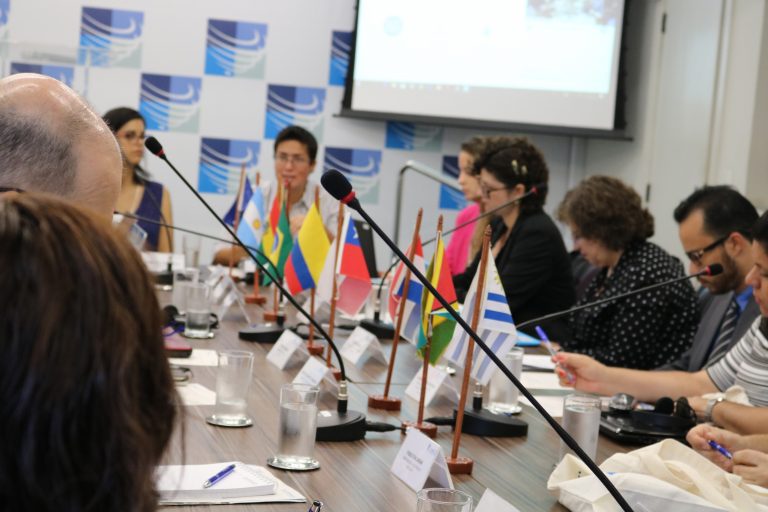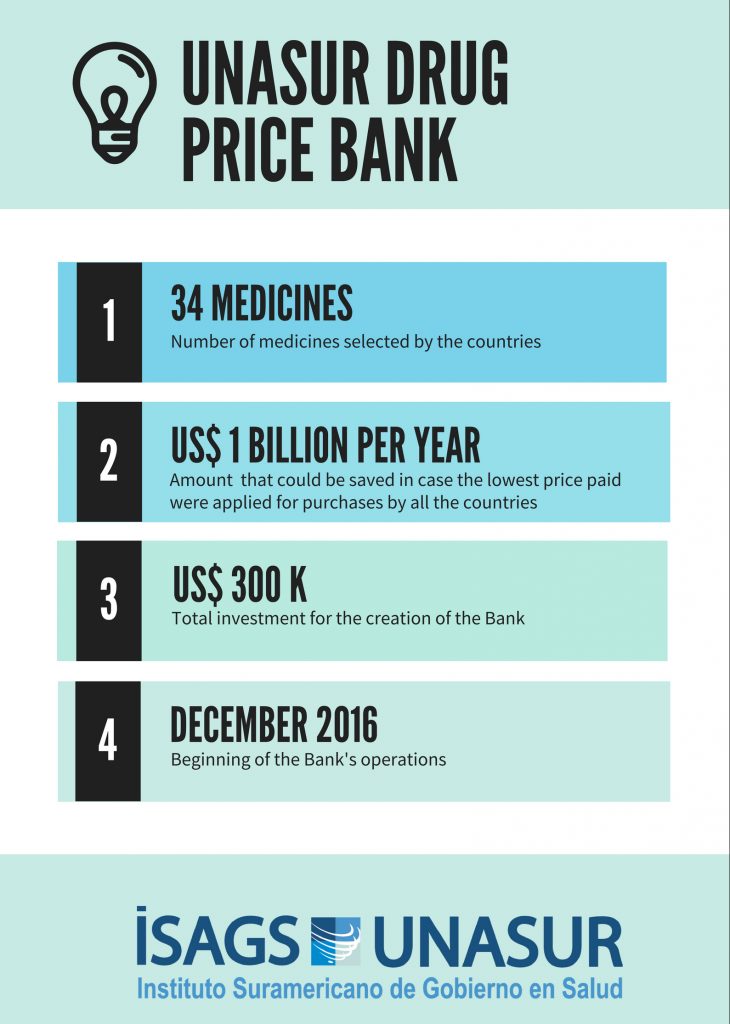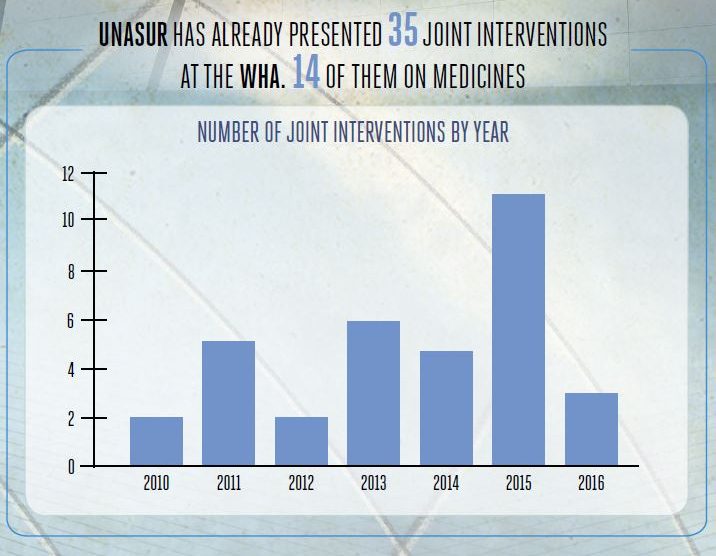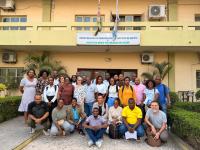Unasur and regional integration in Health
The Union of South American Nations was modelled upon the aspiration to achieve greater South American integration. This would result in the greatest possible well-being for its citizens, in harmony with nature and in an environment of peace, equity, inclusion and justice. It is no surprise that the first Ministerial Councils established within the organization’s structure focused in Defense and Health. This priority would be further confirmed with the creation of two centers of higher studies in these areas in Buenos Aires (Argentina) and Rio de Janeiro (Brazil), respectively. This is how the South American Institute of Government in Health (Isags-Unasur) was created.
While the challenges in terms of Defense were focused on resolving the lags of mistrust that persisted among the countries of the continent for centuries, in terms of Health they have been framed in the fight against inequality and the approach to health as a human right. In its Five-Year Plan, the Health Council makes clear its intention to persevere in a broad view of human development, that is, not to focus on the disease but on the surroundings, the environment and all the conditions that stand between the citizens and their well-being. Therefore, along with Health Systems and Services, Surveillance and Access to Medicines, one of the pillars of the Plan is Social Determination. This ambitious document gave way to a range of health integration initiatives.
An unprecedented health institution
Obviously, a center for higher studies is not exactly new. There are several of these in our countries, both public and private. However, when creating Isags, the Ministers of Health of UNASUR designed an unprecedented framework.
With a small structure, with around 15 officials, our initiatives are boosted through our connection with the Technical Groups and the Structuring Networks of the Health Council. The Groups are formed by representatives of the Ministries dedicated to each of the thematic pillars of the Five-Year Plan, while the Networks congregate counterpart institutions in the 12 member countries, such as the Network of National Institutes and Institutions of Cancer (RINC).
This connection means that Isags has dozens of focal points both in the Ministries of Health and in the most important public research centers in the countries of Unasur. On the one hand, they participate in the Consultative Council of the Institute, influencing the Institute’s agenda; on the other, Isags has an induction role that stimulates the work of the Unasur structures and guarantees the continuity of the initiatives. In a very changing environment, for example, due to government transitions in countries or the rotation of officials, it is important to have a permanent structure such as Isags.
Since its establishment, within its goal to train leaders in Public Health with a regional perspective, 24 workshops and 2 courses have been held. We have also published 13 studies and 3 books that, together, make up an unprecedented literature on Health Systems in the region. In addition, various communication products were devised, such as this monthly magazine, our website and weekly newsletters. They keep our stakeholders informed about the initiatives of the Ministries, the activities of the bloc and the hottest topics of Global Health.
Throughout its almost 7 years, however, an additional mission to provide systematic support to the Health Council was incorporated. Isags does so not only in the organization of Council’s meetings, but also acting as the implementing entity of Health projects financed by the Common Initiatives Fund (FIC) of Unasur.
The FIC
Part of the Unasur budget is reserved for its Common Initiatives Fund, which has financed projects on a wide variety of topics, such as the UNASUR Arts Biennial, studies on competitive economic insertion and infrastructure, data platforms, among others. In the field of Health, three projects of utmost importance to the region have been funded, two of which have already successfully concluded.

One of them, the Drug Price Bank of Unasur is perhaps the bloc’s tool with the most practical and continuous effects in the area of Health. It consists of a database of drug prices, with comparable information among the 12 countries on the pharmacological and economic aspects, which serves as a powerful tool for setting reference prices, establishing drug price ceilings or negotiating prices with the pharmaceutical industry.
The tool, which is already in operation, provides all countries with a very important base to mitigate these discrepancies, but also a fundamental input for negotiations or even joint purchases. In fact, the system has already identified that an estimate of USD 1 billion could be saved, in case the lowest price paid within the region for the 34 listed drugs applied for purchases by all the countries of the Union.
Another initiative that has the potential to foster regional production, facilitate the creation of a regional policy and, in addition, substitute imports, is the Mapping of Drug Production Capacities, which is expected to be completed by the end of 2018. The study will reveal the public and private installed capacity of medicine production in the region, as well as details about their production.
The third project, carried out by RINC, is the Regional Plan of Integrated Actions “Platform of Exchange of Experiences and Technical Assistance for the Prevention and Control of Cervical Cancer in South America”. Its elaboration was supported by institutions of global reach, such as the World Health Organization and the International Agency for Research on Cancer (IARC) and includes the best practices to eliminate the disease.
Diplomacy
The emergence of Unasur as an actor in Global Health marked a milestone in diplomacy. In an unprecedented way, the countries of South America united to influence issues of common interest. Despite the previous existence of other regional and sub-regional blocs and organizations in the Americas, it is evident that social and economic circumstances, as well as issues of geographic contiguity, often create interests and goals that are not quite the same as those of countries up North.
For this reason, the meetings of the South American Health Council have been held not only at the World Health Assembly (AMS), but also at the Directing Council of the Pan  American Health Organization and its Pan American Sanitary Conference, as well as other summits, such as the World Conference on Social Determinants of Health. They became a space of consensus for our region, which is proved by the dozens of common interventions that have taken place over the last 11 years.
American Health Organization and its Pan American Sanitary Conference, as well as other summits, such as the World Conference on Social Determinants of Health. They became a space of consensus for our region, which is proved by the dozens of common interventions that have taken place over the last 11 years.
However, the achievements of Unasur go much further. The continuity of the meetings of the Council, the functioning of its Technical Groups and Networks, as well as Isags initiatives, provide permanent capacity-building for South American health leaders.
In 2017, for instance, Isags conducted the Virtual Course on Health Diplomacy in the Context of South American Integration, together with the Latin American Faculty of Social Sciences (Flacso-Argentina) and Fiocruz (Brazil). Addressing topics such as the regionalization of domestic policies, global governance structures, international law and the relationship with NGOs, international funds and foundations, the course had 60 registered participants from the 12 countries of Unasur and more than twenty classes lectured by ministers and globally renowned experts.
Following the logic of concentric circles, more prepared officials and a more sedimented South American vision allow our region to leverage the action in broader regional groups, regional forums, such as the Pan-American Sanitary Conference, as well as global fora, such as the WHA.
Young, but ready for the future
Some criticisms toward UNASUR allege it should have more ambition and present more practical results, which is undoubtedly desirable. However, they could be ignoring the complexity of integration processes based on sovereignty and respect for differences between countries.
In fact, it is difficult to find integration processes that have produced more results than we mentioned above in the short space of ten years. Until the European Union became what it is today, decades passed between the creation of a group dedicated only to iron and steel issues in 1951 and its effective establishment in 1993. The evolution of organizations such as the Pan-American Health Organization, the Organization of the American States, among others, confirm the exceptionality of the South American process in its ambition and agility.
The area of Health has not only been a great avenue of consensus among our countries, as it has the potential to be an important integrating axis in the region. Circumstantial coincidences or ideological disagreements have always been and will always be present, as long as democracy and diversity are respected. However, achieving the social development goals embodied in the Constitutive Treaty of Unasur and the Plans agreed upon in the Health Council reflects the existing aspirations in each of the constitutional texts of the Member States.
In this context, the way to solve the problems of the Unasur could, in fact, be: More Unasur!



